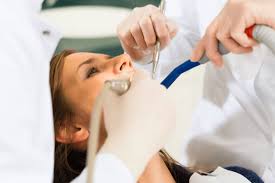Cancer in pets is a challenging topic. You can play a crucial role in early cancer detection by ensuring regular general veterinary care. This proactive step could mean the difference between early intervention and advanced disease management. Your veterinarian in Lambertville, MI, provides essential checks like palpating for unusual lumps, observing weight changes, and noting behavioral shifts. Pets often can’t communicate discomfort directly, so it’s up to you to notice subtle clues like changes in appetite or energy levels. By taking these regular visits seriously, you create a partnership with your vet that can identify potential concerns early. This compassionate vigilance helps catch cancer signs before they escalate. Early detection often improves outcomes, gives more treatment options, and can extend the quality of life for pets. As a pet owner, your commitment to routine care is a powerful tool in safeguarding your pet’s health.
Understanding Cancer in Pets
Cancer can affect pets of all ages and breeds. While some factors like age and breed can increase risk, early detection plays a crucial role in managing the disease. Regular vet visits for general care can uncover hidden problems. These visits are not just about vaccinations or routine check-ups. They are vital for identifying potential cancer indicators, such as unusual growths or changes in behavior.
Key Signs and Symptoms
Pets can’t voice their discomfort, so you need to watch for physical and behavioral changes. Look out for:
- Unexplained lumps or bumps
- Sudden weight loss or gain
- Loss of appetite
- Persistent sores
- Difficulty in breathing or swallowing
- Lethargy or lack of interest in play
Any of these signs warrant a vet visit. Early action can lead to more effective intervention strategies.
Regular Check-Ups: What to Expect
During regular check-ups, your vet examines your pet thoroughly. These visits involve checking the heart, lungs, abdomen, and skin. Vets also assess any behavioral changes you’ve noticed. Blood tests and imaging may be recommended based on initial findings.
Here is a comparison of common diagnostic tools:
| Diagnostic Tool | Purpose | Common Uses |
|---|---|---|
| Blood Test | Checks organ function | Detects abnormalities |
| X-Ray | Visualizes bones and organs | Identifies tumors or lesions |
| Ultrasound | Examines soft tissues | Evaluates tumors |
Benefits of Early Detection
When cancer is caught early, treatment can start sooner. This often means less invasive procedures and better success rates. Early detection can also lead to less expensive treatments and a higher quality of life for your pet. A timely intervention provides more options, potentially including surgery, chemotherapy, or radiation.
Partnering with Your Vet
Your vet is your ally in maintaining your pet’s health. Establishing a solid relationship encourages open communication. Share all concerns and observations, no matter how small. This collaboration helps tailor a care plan that meets your pet’s unique needs.
For further insights, check resources like the American Veterinary Medical Association for professional recommendations and the Cornell University College of Veterinary Medicine for educational materials.
Conclusion
General veterinary care is more than a routine procedure. It is an invaluable practice that enhances your pet’s life. By committing to regular check-ups and being watchful of your pet’s behavior, you empower yourself to act quickly. This vigilance not only strengthens your bond with your pet but also plays a critical role in early cancer detection.
Remember, your actions can significantly impact your pet’s health. Regular vet visits are a simple yet effective tool in this process. Prioritize them, and you contribute to your pet’s long, healthy journey.









